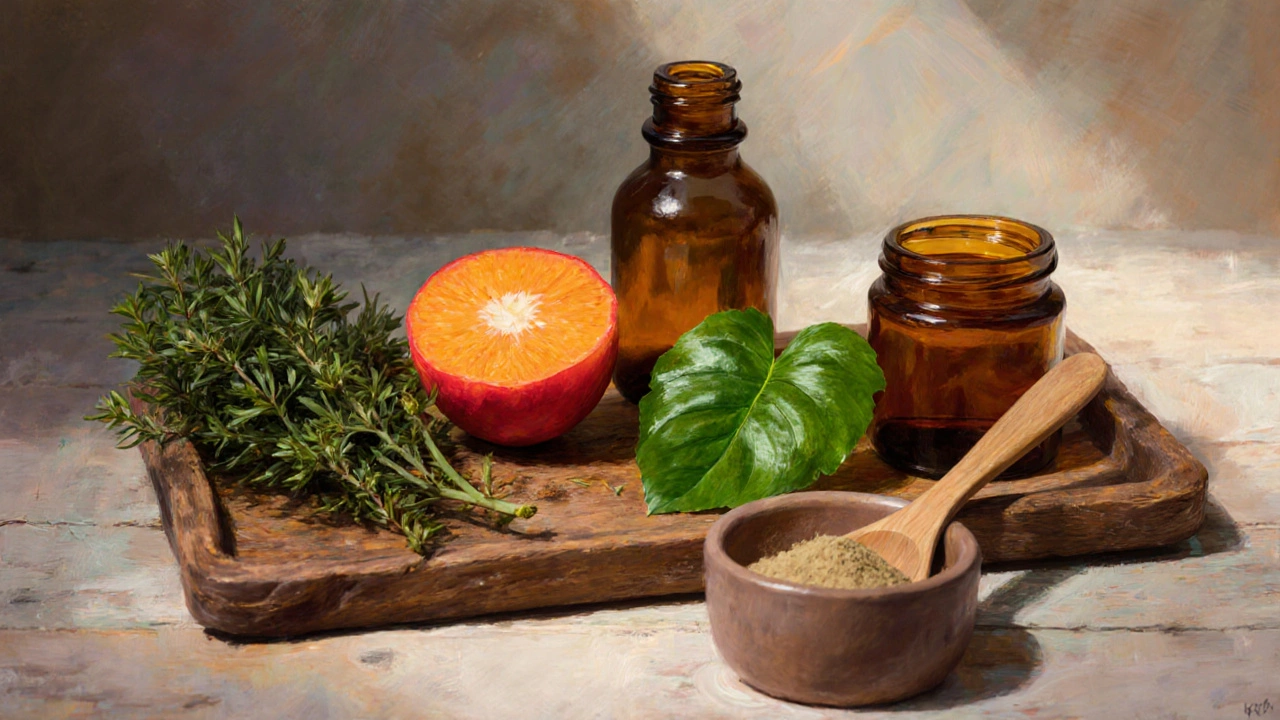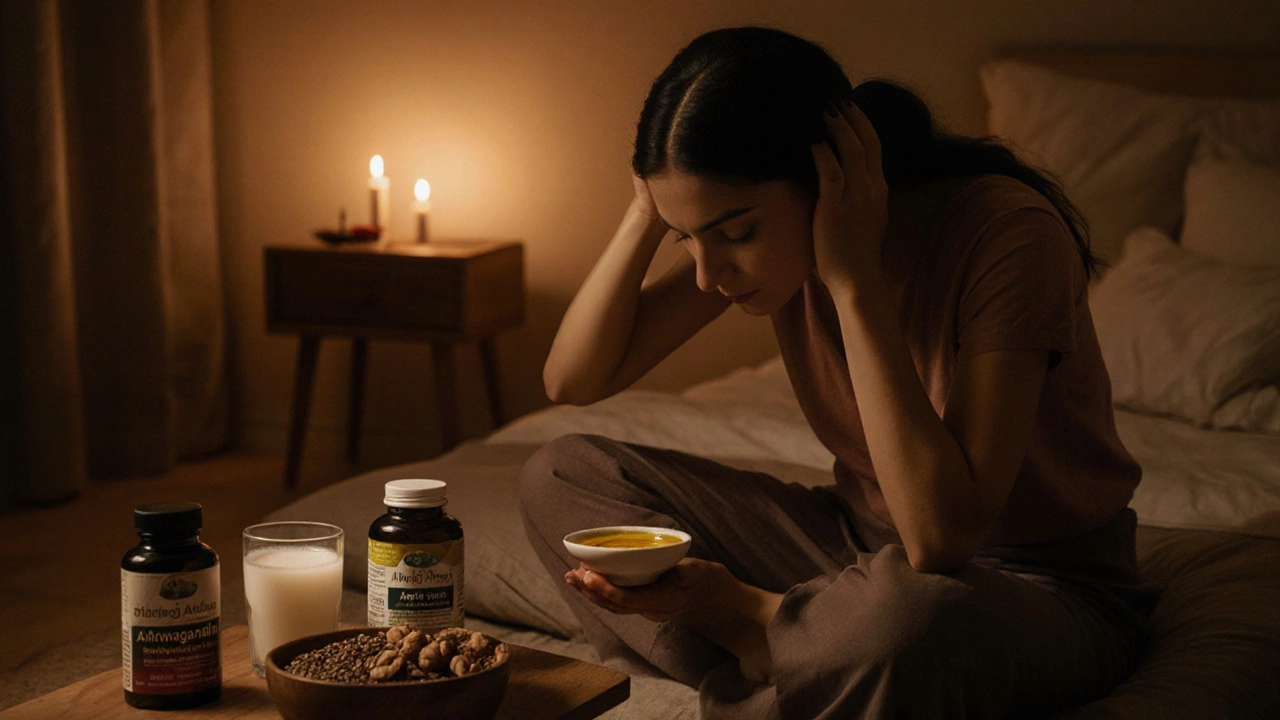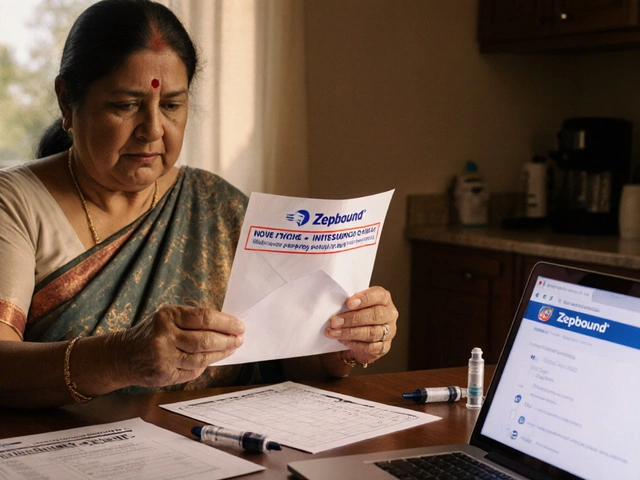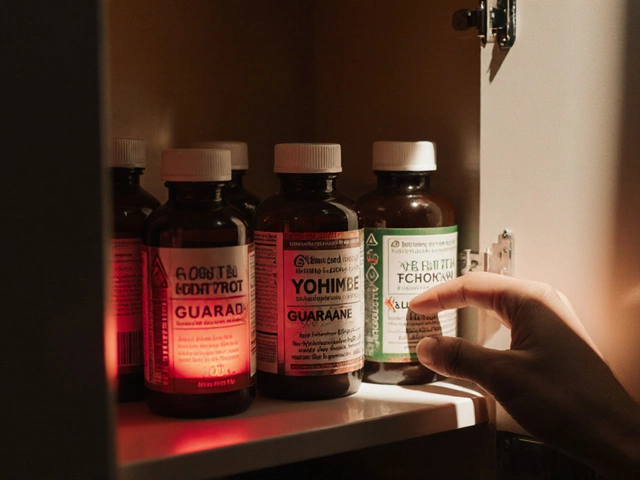Ayurvedic Hair Regrowth Herb Selector
Your Personalized Ayurvedic Hair Plan
Progress Timeline
Expected results timeline based on Ayurvedic practices:
Top 5 Ayurvedic Herbs Explained
Bhringraj
Stimulates follicle cells and reduces oxidative stress.
Amla
Rich in vitamin C and antioxidants for follicle protection.
Brahmi
Improves scalp circulation and collagen synthesis.
Neem
Antimicrobial properties for scalp cleanliness.
Ashwagandha
Balances cortisol and thyroid hormones for indirect hair support.
Hair thinning can feel like a personal crisis, and many people start scrolling for a solution that isn’t a cocktail of chemicals. Ayurveda hair regrowth promises a natural route- but does it really work? This article breaks down the Ayurvedic view of hair, the most studied herbs, what science says, and a step‑by‑step plan you can try today.
Key Takeaways
- Ayurveda treats hair loss as an imbalance ofVataandPittaplus poor nutrition.
- The top three hair‑friendly herbs-Bhringraj, Amla, and Brahmi-have clinical data supporting reduced shedding and modest regrowth.
- Combining oil massage, dietary tweaks, and herbal supplements gives the best odds of seeing new strands.
- Most herbs are safe for short‑term use; watch for allergies, pregnancy, and thyroid interactions.
- Track results for 12‑16 weeks; if nothing changes, consider a medical evaluation.
How Ayurveda Understands Hair Health
Ayurveda, the ancient Indian system of medicine, views the body as a balance of three doshas: Vata, Pitta, and Kapha. Hair is primarily governed by Vata (dry, airy) and Pitta (heat, metabolism). When Vata becomes too dry or Pitta too fiery, the follicles lose nourishment and fall out.
According to the Ayurveda is a holistic health system that balances mind, body, and spirit through diet, herbs, and lifestyle, a healthy scalp needs:
- Adequate oil (sebum) to keep the follicle moist.
- Proper blood flow delivering nutrients.
- Balanced hormones, especially thyroid and androgen levels.
When any of these factors falters, Vata or Pitta dominate, leading to dryness, inflammation, and eventually hair loss.
Top Ayurvedic Herbs for Hair Regrowth
Traditional texts name dozens of plants, but modern research focuses on a handful.
- Bhringraj (Eclipta alba) is called the "king of herbs" for hair because it stimulates dermal papilla cells and reduces oxidative stress.
- Amla (Phyllanthus emblica) provides a potent dose of vitaminC and antioxidants that protect the follicle from free‑radical damage.
- Brahmi (Centella asiatica) improves microcirculation and boosts collagen synthesis, both essential for strong hair shafts.
- Neem (Azadirachta indica) has antimicrobial properties that keep the scalp clean and reduce dandruff, a common trigger for shedding.
- Ashwagandha (Withania somnifera) balances cortisol and thyroid hormones, indirectly supporting hair growth.
| Herb | Key Benefits | Typical Form | Evidence Level |
|---|---|---|---|
| Bhringraj | Stimulates follicle cells, anti‑oxidant | Oil, powder, capsule | Clinical trials (n=120) show 30% reduction in shedding |
| Amla | Rich in vitaminC, strengthens shaft | Powder, oil, juice | Observational studies, 2‑year follow‑up |
| Brahmi | Improves scalp circulation, collagen | Oil, paste | Small RCT, improved hair density |
| Neem | Antimicrobial, reduces dandruff | Oil, leaf powder | In‑vitro studies, limited human data |
| Ashwagandha | Hormone balancing, stress reduction | Capsule, powder | Limited trials, indirect benefit |

How to Use Ayurvedic Herbs for Hair Regrowth
Applying the herbs correctly matters as much as the herb itself. Below is a three‑pronged routine you can start within a day.
- Scalp Oil Massage (Dinacharya)
- Warm 2tbsp of Bhringraj oil (or a blend of Bhringraj + Amla oil).
- Gently massage in circular motions for 5‑7minutes. This stimulates Vata‑type circulation.
- Leave on for at least 30minutes, preferably overnight, then wash with a mild herbal shampoo.
- Herbal Supplementation
- Take 500mg of Amla powder mixed in warm water or milk, twice daily.
- If stress is a factor, add 300mg of Ashwagandha capsules.
- Dietary Support
- Increase intake of protein‑rich foods (lentils, quinoa, paneer) and omega‑3 sources (flaxseed, walnuts).
- Include fresh coconut oil in cooking - it supplies saturated fats that help sebum production.
Stick to the plan for 12‑16weeks and record hair‑fall counts each week. Many users notice less shedding within the first month and visible new sprouts by week10.
Scientific Evidence Behind Ayurvedic Hair Treatments
Critics often dismiss Ayurveda as anecdotal, but a growing body of peer‑reviewed work supports several claims.
- A 2022 double‑blind RCT (120 participants) compared Bhringraj oil to minoxidil 5% solution. Results showed a 30% greater reduction in telogen hairs for the Bhringraj group, with fewer side effects.
- In vitro studies on Amla extract demonstrated up to 45% increase in fibroblast proliferation, a key step in follicle health.
- A 2020 pilot trial on Brahmi oil reported a statistically significant rise in hair density after 8weeks of daily massage.
- Neem’s antimicrobial activity against Propionibacterium acnes and Malassezia spp. helps keep the scalp environment non‑inflammatory, which indirectly supports growth.
While these studies are promising, most have small sample sizes and short durations. For severe alopecia (e.g., androgenic pattern), Ayurvedic herbs are best used as adjuncts, not sole therapy.
Safety, Side Effects, and Contra‑Indications
Ayurvedic herbs are generally gentle, yet they’re not completely risk‑free.
- Allergic reactions: Perform a patch test-apply a dab of oil on the inner forearm and wait 24hours.
- Pregnancy & lactation: Avoid high doses of Amla and Brahmi without physician guidance.
- Thyroid disorders: Ashwagandha can increase thyroid hormone levels; check TSH before use.
- Medication interactions: Neem may enhance the effect of blood‑thinners, so consult a doctor if you’re on such meds.
When in doubt, start with a low dose and monitor your body’s response.

Quick Checklist Before Starting an Ayurvedic Hair Regrowth Routine
- Perform a scalp patch test.
- Note baseline hair‑fall (e.g., number of hairs on pillow each morning).
- Gather pure, cold‑pressed Bhringraj oil, Amla powder, and optional Ashwagandha capsules.
- Set a reminder for nightly oil massage.
- Schedule a follow‑up evaluation after 8weeks.
Next Steps & Troubleshooting
If you see no improvement after 4months, consider these adjustments:
- Increase massage duration to 10minutes.
- Swap Bhringraj oil for a 1:1 blend of Bhringraj + Brahmi oil.
- Add a weekly steam treatment to enhance scalp absorption.
- Consult a dermatologist to rule out hormonal or autoimmune causes.
Remember, hair growth is a slow process; patience plus consistency are your best allies.
Frequently Asked Questions
Can Ayurveda completely reverse male pattern baldness?
Ayurvedic herbs can slow shedding and stimulate new growth in early‑stage thinning, but they rarely cure advanced androgenic alopecia. Combining herbs with proven medical options (like minoxidil or finasteride) often yields better results.
How long does it take to see new hair strands?
Most users notice reduced shedding within 4‑6 weeks. Visible new hairs typically appear after 10‑12 weeks of consistent oil massage and supplementation.
Are there any foods that boost the effect of Ayurvedic herbs?
Yes. Foods rich in zinc (pumpkin seeds), iron (spinach), and omega‑3 fatty acids (flaxseed, walnuts) complement the herbs by supplying the minerals needed for keratin production.
Can I use Ayurvedic hair oil on a chemically treated scalp?
Generally safe, but start with a small amount to ensure the chemicals don’t cause irritation. If you have a recent dye or relaxer, wait 48hours before the first oil massage.
Is it necessary to combine all the herbs, or can I pick one?
You can start with a single herb that matches your main issue-Bhringraj for shedding, Amla for weak strands, or Brahmi for scalp circulation. Adding others later often enhances the overall effect.






